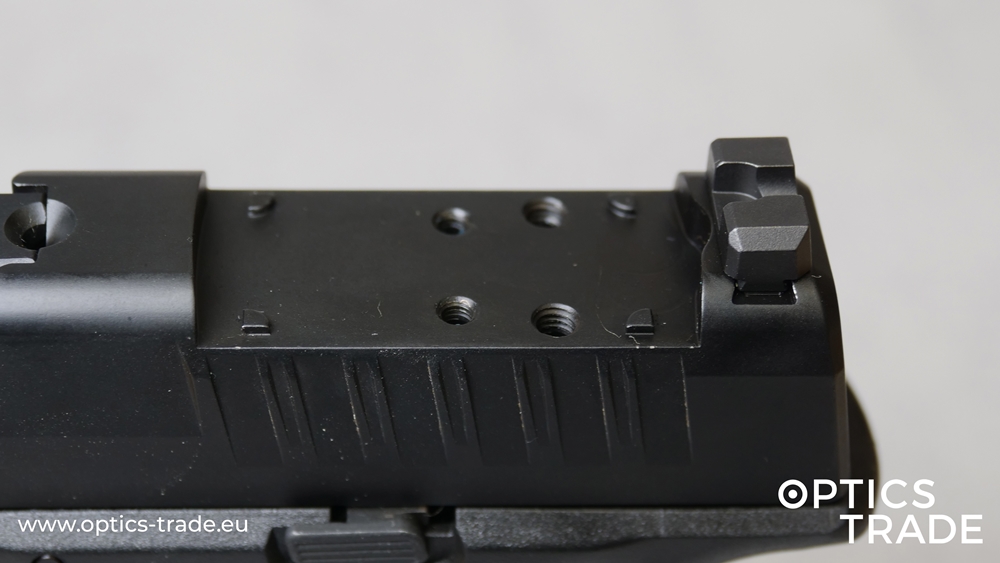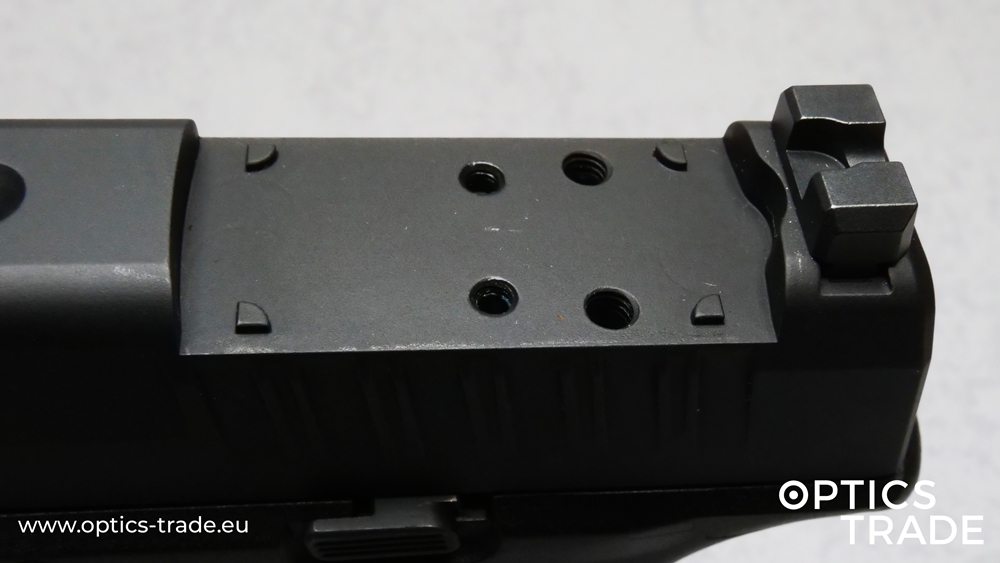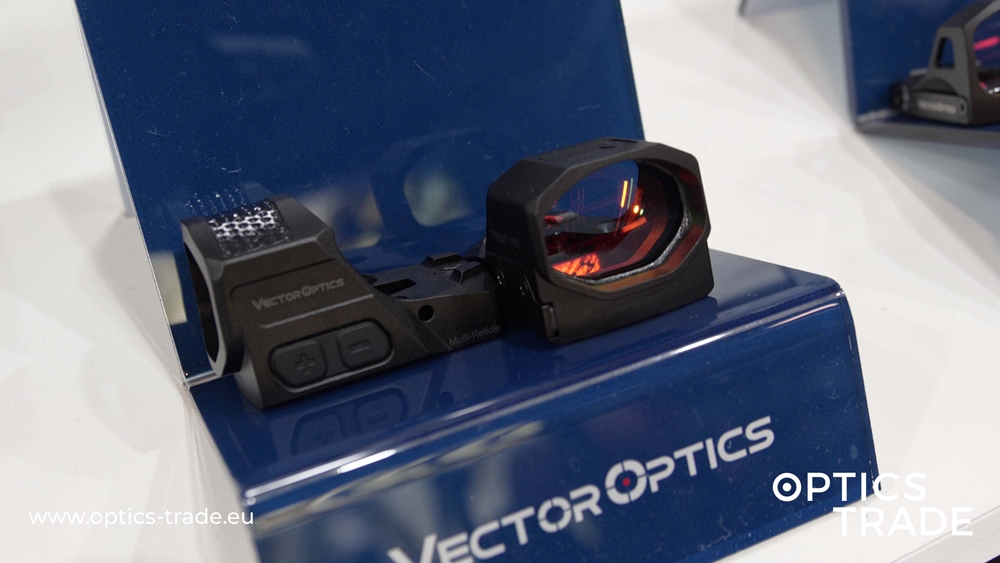Hello and welcome to another episode of Optics Trade Debates. Today we’re here to talk about another subcategory of red dots that the customers can find on our official webpage – namely, full-tube red dot sights.
Let’s start by outlining some basic differences between the usual and full-tube red dots sights. The most obvious difference that separates this subcategory from all others is in the size and weight of the devices. Full-tube red dot sights are much bigger and heavier than standard forms of red dots.
Full-tube red dot sights are longer, tubular and their shape is reminiscent of riflescopes. What is more, they are also mounted using the same mounts as riflescopes. That means with either 30-millimetre or 34-millimetre rings like the Aimpoint H34S model from the Hunter series.
Full-tube red dot sights that feature mounting with only one ring exist. These red dots tend to be used for tactical purposes only. Usually, they have a Cantilever mount for AR platforms.
There’s only a small space on the tube where the user can mount that single ring, while all other devices in this subcategory have a far more considerable mounting length.
All other devices in this subcategory are mounted with two rings. For instance, models like the Aimpoint 9000 series, Sightron S30 that are intended for hunting applications.
Whether a Picatinny or a Weaver ring is needed, depends entirely on the platform. Normally, full-tube red dot sights meant for tactical use on AR platforms or similar rifles are mounted a little bit higher than the Picatinny rail.
On the other hand, those full-tube red dots used in hunting are used on mounts like Sauer, Blaser, Mauser, regular mounting solutions, pivot mounts or any other form of hunting mounts out there. They are simply designed differently.
Customers can easily spot the difference between full-tube red dot sights made for tactical use and those intended for a hunting application.
Some full-tube red dot sights have thdiameterre of 1 inch. However, they are truly rare and lately not many seem to be in production either.
Let’s talk a bit more about dot dimensions. The most common one for this subcategory of red dot sight is 2 MOA. That means it covers approximately 6 centimetres on 100 metres.
The customer can also purchase devices with a 4 MOA dot, intended for shots on shorter distances but nothing more than that.
If we take a look at other form factors, like the reflex red dots that are made for pistols we can see that many other dots are available (e.g. 6 MOA, 7 MOA, 8 MOA …).
This is not possible in this full-tube red dot subcategory and there is no need for it either since the subtension coverage of it is so big.
Shots up to 100 metres should be done easily with the regular, 2 MOA dot.
It’s time to shift our focus on the optical performance. They are superior to the red dots of all other sizes because there is no need for compromises. Compare that to micro-sized red dots where the form factor dictates optical capabilities.
Full-tube red dot sights have a bigger window to look through.
As always, there are plenty of advantages and disadvantages of full-tube red dot sights. Perhaps it would be best to compare them to other form factors, one by one.
Full-tube red dot sights have an advantage over reflex red dots because they have a better dot definition, a bigger window to look through and usually optically outperform reflex red dot sights. In addition to that, they also have a longer battery life. The downside is that the full-tube red dot sights are bigger and heavier.
Now, let’s compare them with small-tube red dot sights. These little devices are often called micro red dots after the famous Aimpoint Micro series. Optically speaking, they are no match for full-tube red dot sights. However, the latter are much heavier and more expensive than micro red dots.
When mounted on firearms, the full-tube models are not as aesthetically pleasing, either. Still, the mounting advantages of full-size red dots are considerable. The customer can use any mounts suitable for normal, 30-millimetre riflescopes. Micro models often require special mounting solutions.
Most models, at least Aimpoint ones, can be bought in different lengths so that the mounting becomes even easier. For example, if the user has a longer rifle action and uses some kind of a Magnum calibre with a longer casing, they can opt for an L version of any Aimpoint red dot. That way, they can enjoy the same optical performance and have an easier time mounting their longer red dot device.
In general, these full-tube red dot sights are the best option for a user who is interested in the best optical performance a red dot device can possibly give. That means no distortion of the field of view, a crisp and well-defined red dot, no tinting of the lens and so on.
For others, who prioritize form over optics, full-tube red dot sights should not be the first choice. They will find better, more compact options in the micro or even reflex red dot sights subcategories on our webpage. All of these models are smaller and lighter.
As far as the question of recoil-proofing is concerned, it all depends on the model and build quality. For example, all Aimpoint full-tube red dot series (Hunter, 9000) can be used with any calibre, including Magnum ones. These are the premium level, the best red dots that money can buy.
With other manufacturers, it simply depends on the model. If this is something you’re interested in, simply contact us or the manufacturer and we’ll respond with the list of calibres that can be used with that specific red dot device.
Note that on the whole, red dot sights are not too prone to failure with harsh recoils, except those that sell at around 50 euros. In that case, the cheap price dictates the build quality.
Consider the reputability of the manufacturer before making a purchase but spending 200 or 250 euros should already place the buyer on the safe side. Those red dot sights should be recoil-proof with most calibres.
Now, anything above 500 euros pretty much guarantees a premium product that will ensure a safe use on all calibres, along with Magnum ones.
This marks our segway into product pricing. Decent full-tube red dot sights start at around 150 or 200 euros. These mark the basic entry-level. For premium quality products, the customer can spend all the way up to 800 or 900 euros. It all comes down to the optical performance and build quality.
This will be all for today. Thank you for your attention. If you have any questions left, feel free to drop us an email or use the comment section below. We look forward to hearing from you. Please like and share this video if you found it useful. Subscribe to our YouTube channel for more content. We’ll see you next time.
Products mentioned:




